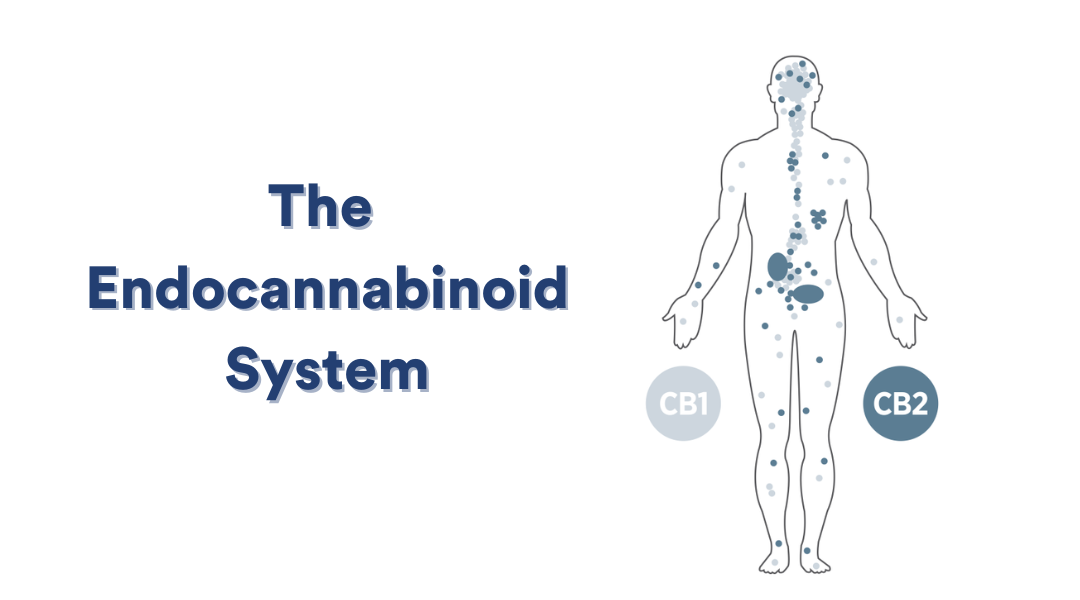
The Beginner's Guide to CBD, Part 2: The Endocannabinoid System
If you have been researching CBD at all, there is a good chance you have heard of the endocannabinoid system (ECS). Today we will be discussing what the endocannabinoid system is and dive a little deeper into how it works. Get ready to remember a little biology!
The ECS is a biochemical communication system that plays a crucial role in regulating our body's everyday functions such as appetite, mood, sleep, and pain. It helps keep the body in homeostasis, which is a large task.
When researchers discovered the ECS, they found there are 2 main types of receptors: CB1 and CB2. These receptors are scattered all over the body. CB1 receptors can be found mostly in the central nervous system (CNS) and CB2 receptors can be primarily found on the peripheral nervous system which is associated with the immune system.
Ready to get your mind blown? The human body makes its own cannabinoids. Yes, I know… crazy! These naturally synthesized cannabinoids are called endocannabinoids (endo means “inner” or “within”). The best known endocannabinoids are anandamide (AEA) and 2-arachidonoylglycerol (2-AG). Anandamide is responsible for the bliss feeling after exercise, also known as “runners high”.
Endocannabinoids bind to the CB1 and CB2 receptors. You can think of this process like a lock and key system. Once the key (the endocannabinoid) is put into the lock (CB1 and CB2 receptors) it is “unlocked” and the magic can happen. This magic opens ion channels, bringing the cannabinoid or endocannabinoid into the cell. Depending on the types of “keys” being used, the CB1 and CB2 receptors will trigger different effects within the cell and within the body.
Is your head spinning yet? Bear with me…
Where does cannabis fit into all of this? Remember that THC and CBD are two of the major cannabinoids found in the cannabis plant (out of over 100!). You can think of plant-derived cannabinoids (also called phytocannabinoids) as pick locks. A thief does not always have the “key” to unlock the door but they do have tools to get the job done. These phytocannabinoid pick locks (CBD, THC, etc.) fit into the locks (CB1 and CB2 receptors), activating the ECS. And viola…. using cannabis makes the magic happen!
It’s important to remember that substances created outside the body that bind to receptors within the body are not exclusive to cannabis. Opioids, caffeine and alcohol are other examples of pick locks that bind to certain receptors within body, creating a desired effect. Sometimes the body prefers these substances over the naturally occurring compounds. This is one of the reasons opioids are so dangerous.
Knowledge of the ECS is relatively new and lacks depth. Despite the lack of knowledge about how the ECS works, why it may be activated or inhibited, or what effects it may have, recent evidence suggests that an understanding of the ECS could be extremely important in preventing, managing, or even treating certain chronic conditions. This prospect is what makes my heart skip a beat with excitement and just one of the reasons I fall in love with the cannabis plant a little bit more every time I learn a new nugget of information.
In Part 3 of this guide I will explain how CBD interacts with the ECS. I didn’t want to scare you off with too many memories of your college biochemistry professor!
In case you missed it, check out Part 1 of this series, What is CBD, here!
Sources:
- Alger, Bradley E. “Getting high on the endocannabinoid system.” Cerebrum : the Dana forum on brain science vol. 2013 14. 1 Nov. 2013
- Ahn, Kay et al. “Enzymatic pathways that regulate endocannabinoid signaling in the nervous system.” Chemical reviews vol. 108,5 (2008): 1687-707. doi:10.1021/cr0782067
- Pertwee, R G. “The diverse CB1 and CB2 receptor pharmacology of three plant cannabinoids: delta9-tetrahydrocannabinol, cannabidiol and delta9-tetrahydrocannabivarin.” British journal of pharmacology vol. 153,2 (2008): 199-215. doi:10.1038/sj.bjp.070744

